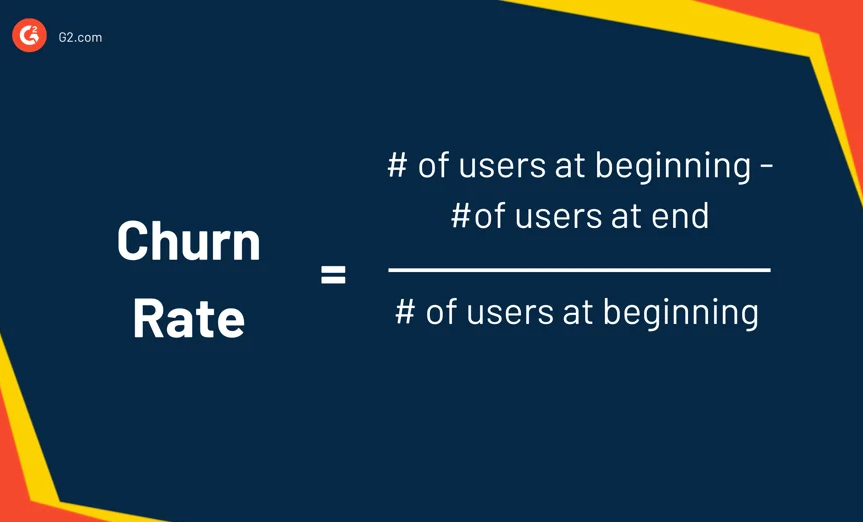Guide to CRM and Marketing Automation for Growth
As the digital business landscape evolves, successful companies are increasingly leveraging technology to streamline their customer management processes. One such technological marvel is Customer Relationship Management (CRM) systems. These are powerful tools for managing all interactions with customers and prospects. More and more businesses, regardless of their size, are embracing CRM to consolidate customer touchpoints into a single view and offer an enhanced customer experience.
The Expanding CRM Universe
The CRM market has experienced significant growth, with its size projected to reach $163.16B by 2030 from a modest $58.82B in 2022. This staggering increase reflects an impressive compound annual growth rate (CAGR) of 13.9% from 2023 to 2030a
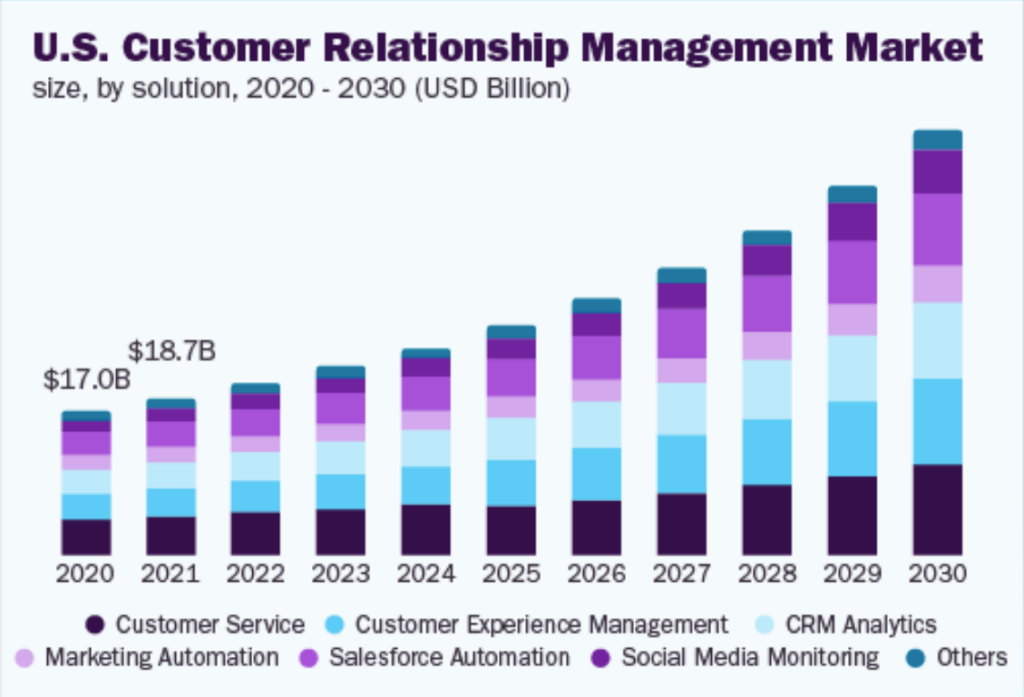
Source: Grand View Research
As a result, businesses of all sizes are increasingly adopting CRM to unify customers’ touchpoints into a single view and enhance the customer’s experience. This proliferation is a testament to the pivotal role CRM plays in consolidating customer interactions, streamlining communication, and ultimately driving business growth.
The Multiplying Benefits of CRM and Marketing Automation Integration
1. Enhanced Collaboration and Lead Management
Integrating CRM with a marketing automation platform significantly streamlines the process of lead management. This integration enables marketing and sales teams to work collaboratively, tracking and managing lead touchpoints effectively. Once a lead is nurtured and ready for sales conversations, it can be handed over seamlessly to the sales team, reducing the chances of missed opportunities and fostering improved customer acquisition rates.
2. More Personalized Customer Communication
In the digital age, data is often scattered across multiple platforms and tools, making personalized communication a challenging task. The integration of CRM and marketing automation simplifies this process, allowing marketers to send highly personalized messages based on individual customer behaviors. This targeted communication not only enhances customer relationships but also improves engagement, fosters loyalty, and ultimately, leads to higher conversion rates.
3. Unification of Data for Better Tracking and Attribution
CRM and marketing automation integration effectively eliminate data silos, unifying all customer activities into a single, accessible view. The two-way flow of customer data prevents information bottlenecks and gaps, making for a seamless exchange of insights between the systems. By tracking all touchpoints in one place, businesses can simplify their marketing attribution, making it easier to identify what strategies are working and what needs improvement. This, in turn, enhances the precision of marketing strategies and the overall performance of the business.
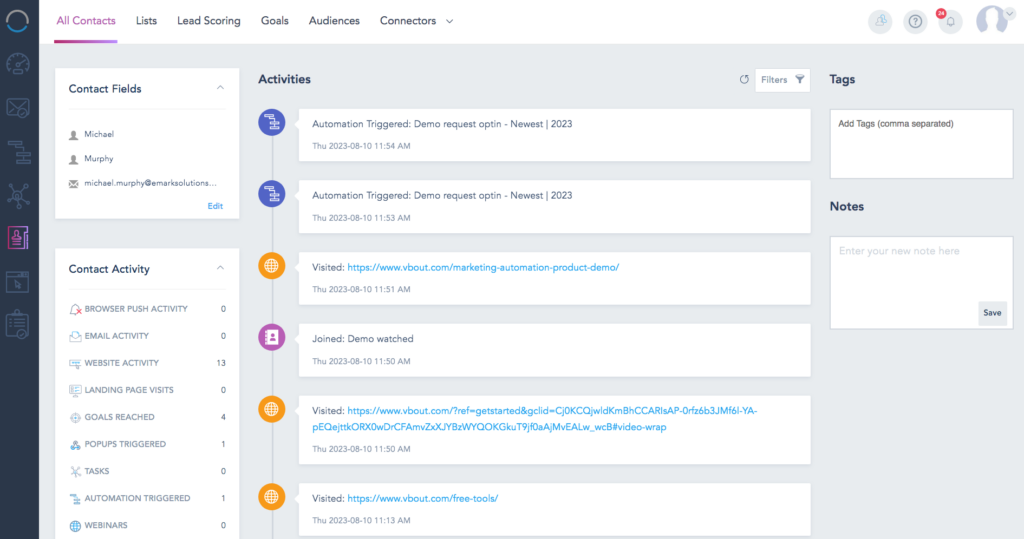 Source: VBOUT
Source: VBOUT
Approaching CRM-Marketing Automation Integration
CRM-Marketing automation integration can be achieved through various methods:
1. Native Integrations
These are direct integrations between the two systems, achieved without touching code or using middle connectors. They allow for easy and efficient data flow between the platforms, making it easily accessible to your employees.
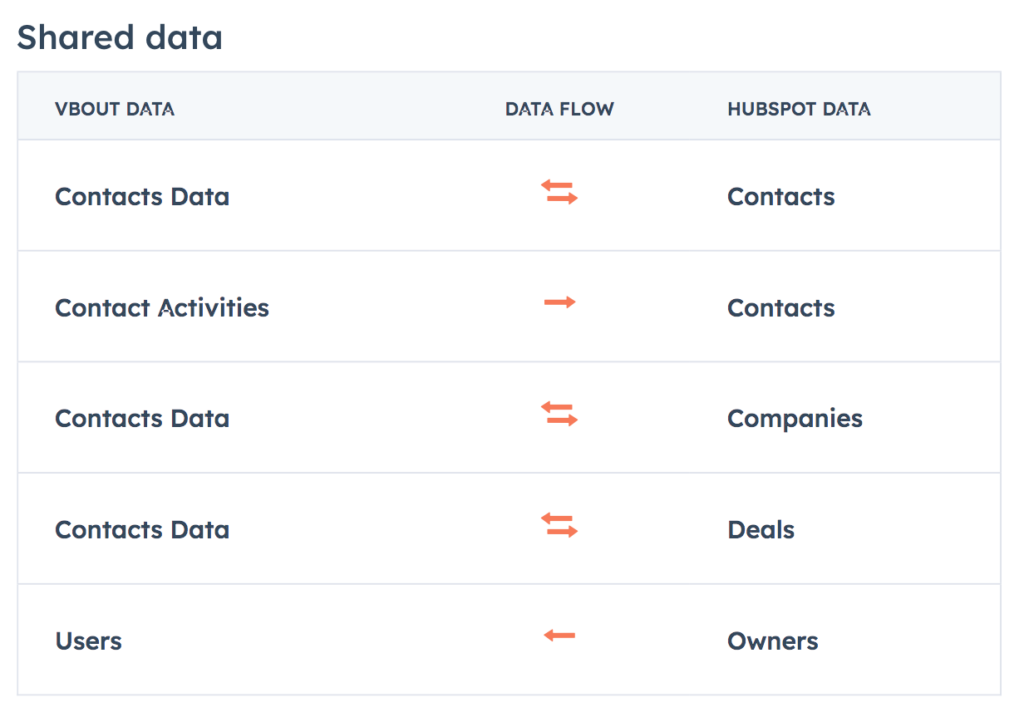 Source: HubSpot
Source: HubSpot
2. Third-Party Connectors
Software applications like Zapier, Pabbly, or Integrately can be used to sync data between CRM and marketing automation platforms, bypassing the need for custom development. These integrations provide pre-built actions and triggers based on APIs.
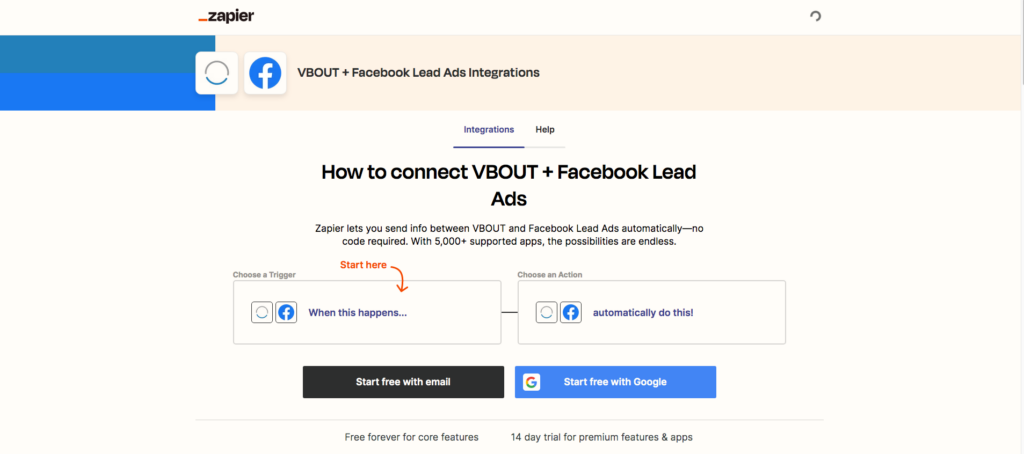 Source: Zapier
Source: Zapier
3. Custom API Integrations
Custom API integrations involve connecting two or more software solutions specifically tailored to meet a business’s unique needs. Unlike native integrations or third-party connectors, which offer standardized connections, custom API integrations cater to a business’s distinct operational, strategic, and technical requirements.
One of the prime benefits of custom integrations is the creation of unique workflows. Every business has specific operational dynamics, and with custom API integrations, it’s possible to establish workflows that closely align with these dynamics. This level of customization allows for enhanced process efficiency and better alignment with business goals.
However, it’s important to remember that custom integrations require a higher level of technical expertise and development effort compared to native integrations or third-party connectors. From the initial setup to maintenance and upgrades, custom API integrations necessitate robust technical support and resources. Therefore, businesses should factor in these considerations before opting for a custom integration approach.
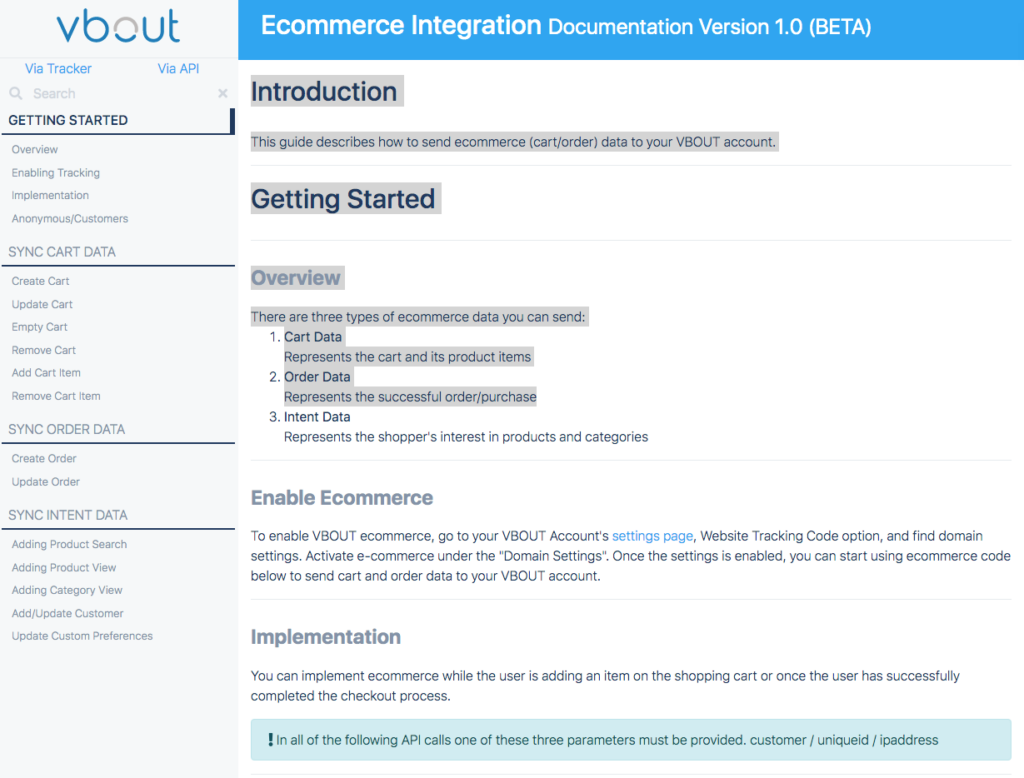 Source: VBOUT
Source: VBOUT
Choosing a CRM Solution: Key Factors to Consider
Several key factors should guide your selection of a CRM solution:
1. AI-Powered Capabilities
AI-powered CRM solutions are becoming increasingly vital for modern businesses. These systems offer more accurate lead scoring, driving marketing and sales efficiency to new heights. By utilizing AI-powered chatbots, marketing teams can engage with their leads and qualify them interactively and intuitively. The power of AI doesn’t stop there; it also enables predictive segmentation. This feature allows the CRM to identify leads that are more likely to convert and possess a high lifetime value, which is then synced to the marketing automation platform for targeted, personalized campaigns.
2. User-Friendliness
A CRM platform’s user-friendliness is paramount to its successful adoption within an organization. An easy-to-navigate interface minimizes the learning curve, thereby enhancing productivity. The CRM solution should also offer various customization options that can be tailored to your business’s unique requirements and objectives. Comprehensive training resources, including video tutorials, onboarding, documentation, and dedicated customer support, should also be a key consideration when selecting a CRM platform.
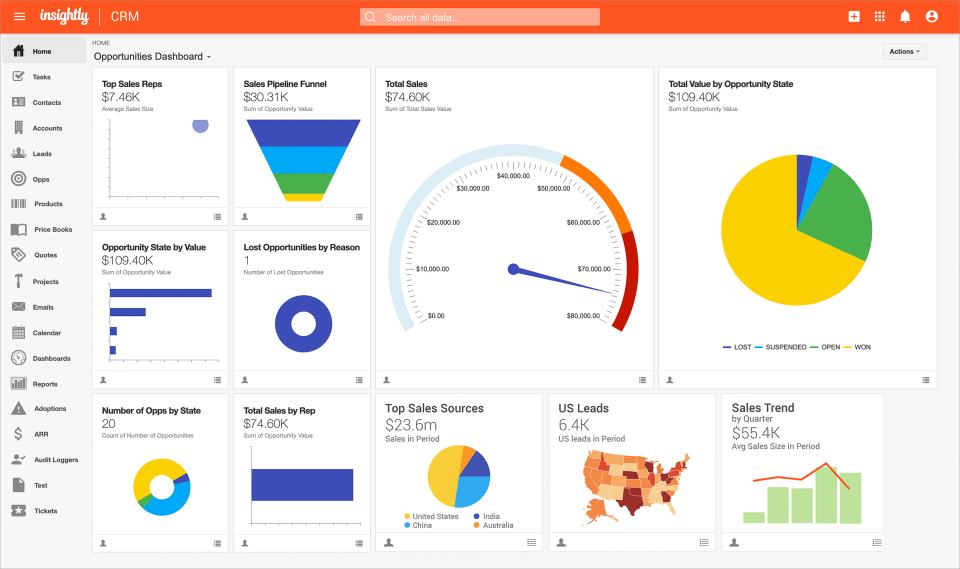 Source: Capterra
Source: Capterra
3. Scalability
Scalability is another critical factor to consider when selecting a CRM system. Businesses are not static; they grow, evolve, and their needs change over time. Consequently, the CRM you choose today should not just meet your current requirements, but also be flexible enough to accommodate your business’s growth and future needs.
A scalable CRM platform allows for enhancements, upgrades, and expansions as your business requirements and database grow over time. You want a CRM that can handle an increase in data volume, more sophisticated automation workflows, or a larger number of users without performance deterioration. This adaptability ensures you don’t outgrow the system quickly, avoiding the cost and disruption of migrating to a new platform down the line.
Choosing a CRM that offers various pricing tiers can be beneficial in this regard. As your business expands, you can simply upgrade to a higher tier that matches your evolving needs. This means you can start with a CRM system that fits your current budget and size, and as your company grows, your CRM grows with you.
A scalable CRM not only preserves your data but also reduces the need for your marketing and sales teams to learn new systems. They can continue using a system they are familiar with, even as your business scales. This continuity enhances productivity and helps maintain consistent customer experience across all touchpoints.
4. Budgetary Considerations
Economic feasibility is a crucial consideration when selecting a CRM tool. You should evaluate not only the upfront costs associated with your chosen CRM tool but also the return on investment it offers. Moreover, it’s important to consider whether your preferred pricing plan includes additional benefits and covers extra costs like training, implementation, and support. It’s also crucial to note that custom API integration may involve higher development and maintenance costs compared to third-party connectors or native integrations.
5. Data Security and Compliance
Data security and compliance should never be overlooked when choosing a CRM solution. You should assess the data security measures provided by native integration, third-party, or custom API CRM solutions. The chosen CRM solution must comply with relevant data protection regulations and safeguard sensitive customer information. It should also be transparent about where your customers’ personal data is stored and how it’s processed, helping you build trust with your customers and avoid potential legal ramifications.
Utilizing Unified Data for Targeted and Personalized Marketing Campaigns
Once you’ve integrated your CRM and marketing automation platform, you can leverage the unified data to create personalized marketing campaigns. This process involves segmentation and targeting, personalized content and offers, automated trigger-based campaigns, cross-channel automation, and predictive analytics.
1. Segmentation and Targeting
In a world where consumers are constantly bombarded with marketing messages, creating targeted, personalized campaigns is essential. By consolidating all integrated customer data into your marketing automation platform, you can build accurate customer profiles and segments. This grouping could be based on various factors such as demographic attributes, behavioral tendencies, and firmographic data. Such effective segmentation paves the way for more targeted and personalized marketing campaigns, thereby increasing their relevance and likelihood of success.
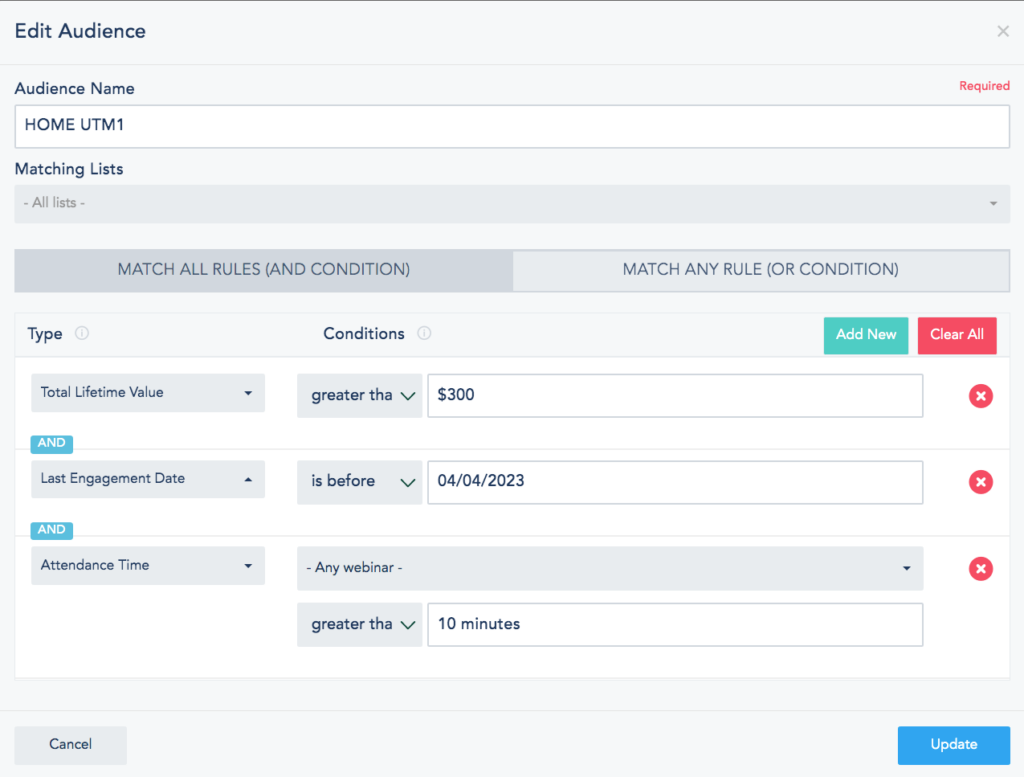 Source: VBOUT
Source: VBOUT
2. Personalized Content and Offers
Leveraging unified data allows for creating personalized marketing messages and campaigns that truly resonate with your customers. By considering individual customers’ interests, previous purchases, and browsing patterns, you can tailor content and offers to suit their unique needs and preferences. This approach facilitates the creation of dynamic content and landing pages that align with the lead’s profile, thereby increasing engagement and conversion rates.
 Source: VBOUT
Source: VBOUT
3. Automated Trigger-Based Campaigns
Automation has become an integral part of successful marketing strategies. By implementing automated workflows based on specific actions like browsing behaviors, reaching a lead score, or changing a value in the CRM, you can ensure timely and relevant communication. Automating these trigger-based campaigns not only saves significant time and effort but also increases the effectiveness of your marketing efforts, leading to improved business outcomes.
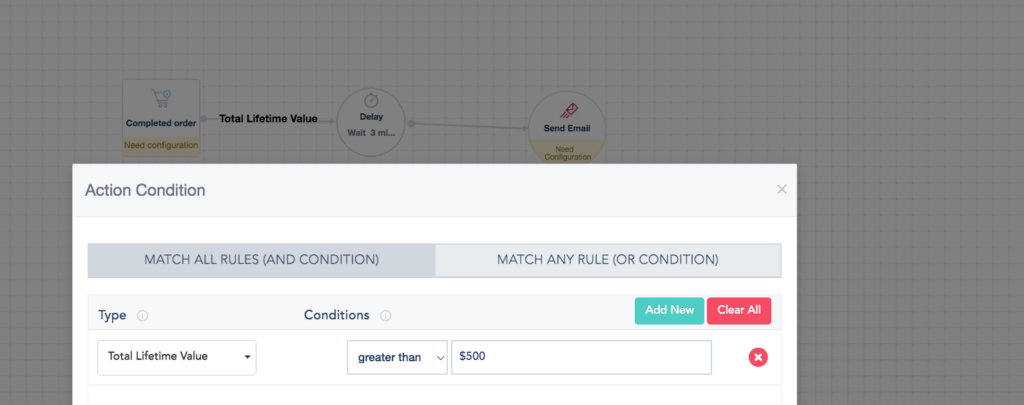 Source: VBOUT
Source: VBOUT
4. Cross-Channel Automation
In today’s omnichannel world, it’s crucial to reach your audience where they are. Cross-channel automation allows for the delivery of personalized messages across various marketing channels, including emails, SMS, and web push notifications. By syncing leads based on behaviors to your Facebook or Google audiences, you can retarget with personalized ads. This approach ensures a consistent, cohesive brand experience, improving customer engagement and loyalty.
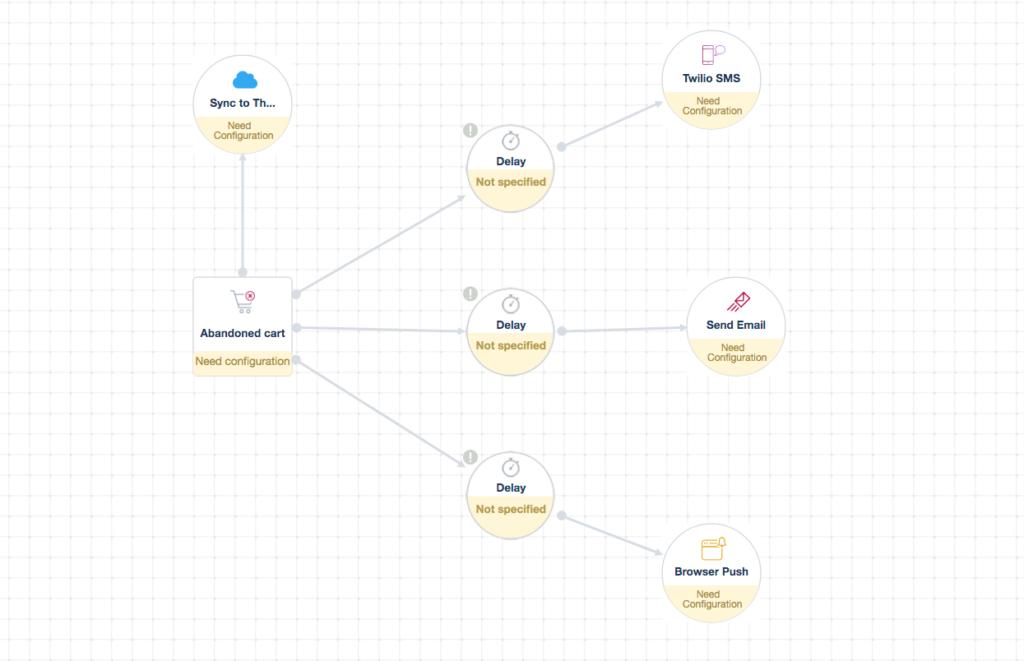
Source: VBOUT
5. Predictive Analytics
As the saying goes, knowledge is power. AI-Powered predictive pipelines provide a profound understanding of your customers by analyzing the integrated data, including demographics, behavioral patterns, purchase history, and engagement metrics. Utilizing these tools to anticipate a customer’s likelihood to make a purchase or churn enables the crafting of proactive and targeted marketing messages, thereby increasing customer retention and revenue.
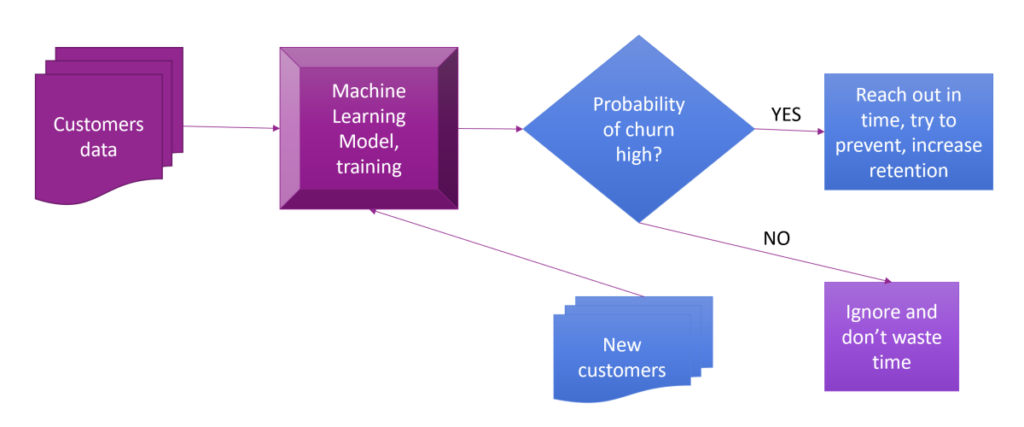 Source: Graphite
Source: Graphite
Key Performance Indicators (KPIs) to Evaluate CRM Integration Success
Key performance indicators (KPIs) such as data completeness and accuracy, close rate, lead velocity, customer lifetime value (CLTV), churn rate, customer acquisition cost (CAC), and campaign ROI can be used to evaluate the success of your CRM integration.
1. Data Completeness and Accuracy
An essential aspect of CRM integration is ensuring data integrity, including both completeness and accuracy. Track the percentage of complete and accurate customer records across both platforms. This involves conducting comprehensive data mapping by identifying fields to sync and implementing field validation rules to ensure consistency and format adherence. Regular audits of customer records, either manually or via data quality tools, should be conducted to detect and resolve duplicate records or any missing information.
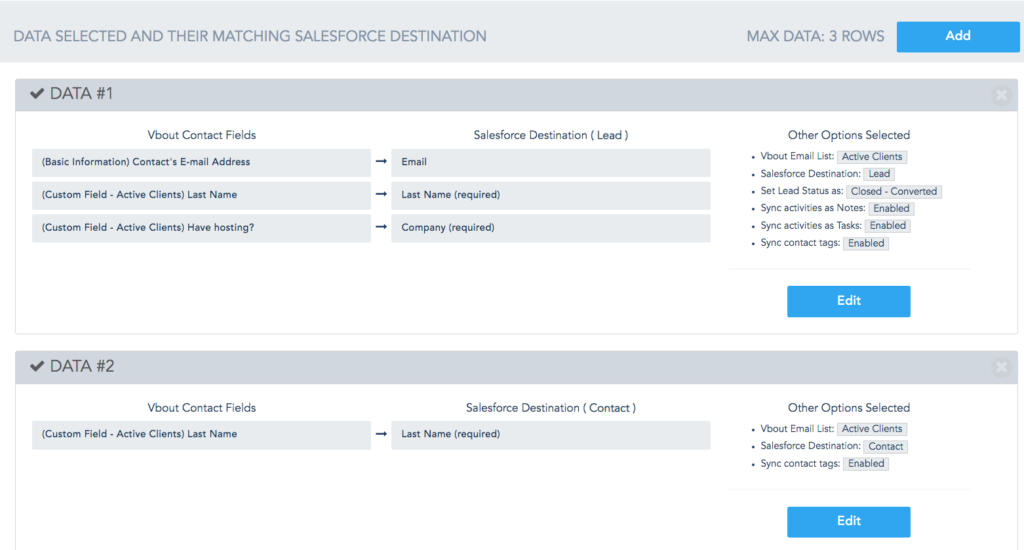 Source: VBOUT
Source: VBOUT
2. Close Rate
The close rate represents the ratio of successful conversions after implementing the CRM integration. By comparing your close rate for the 6 months before and after the CRM integration, you can gauge the effectiveness of the implementation. A higher close rate post-implementation indicates that your CRM integration is performing well and positively impacting your business.
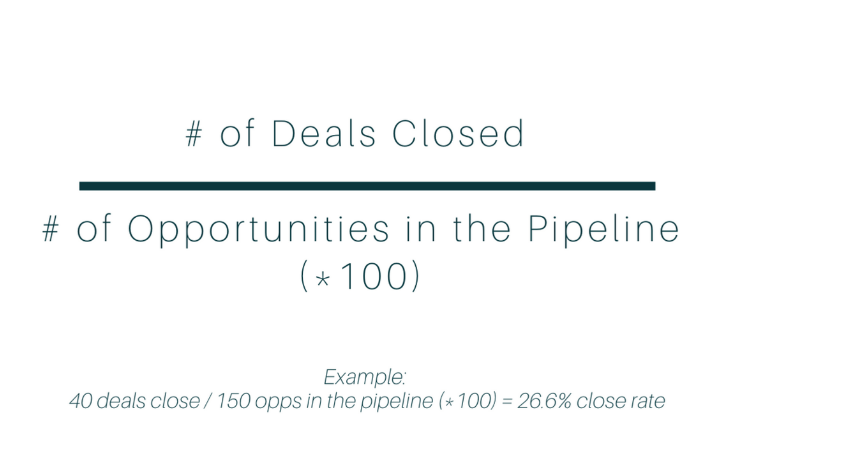 Source: Zendesk
Source: Zendesk
3. Length of Sales Cycle (Lead Velocity)
The length of the sales cycle, or lead velocity, measures the time it takes to qualify a lead from the initial conversation with your sales team. An efficient CRM system can streamline this process, shortening the sales cycle and helping your team close more deals in less time. You can calculate lead velocity by subtracting the number of qualified leads for the previous month from the current month’s qualified leads, dividing the result by the number of last month’s qualified leads, and multiplying by 100.
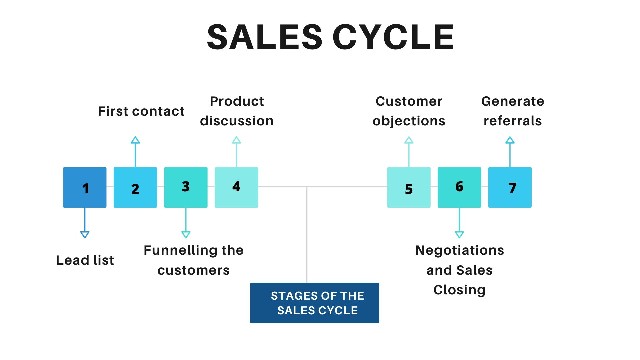 Source: Marketing91
Source: Marketing91
4. Customer Lifetime Value (CLTV)
Customer Lifetime Value (CLTV) signifies the revenue generated by a single customer throughout their association with your business. A successful CRM integration provides complete visibility over metrics like CLTV, Average Order Value (AOV), Conversion Value (CV), and more, enabling more strategic decision-making and customer relationship management.
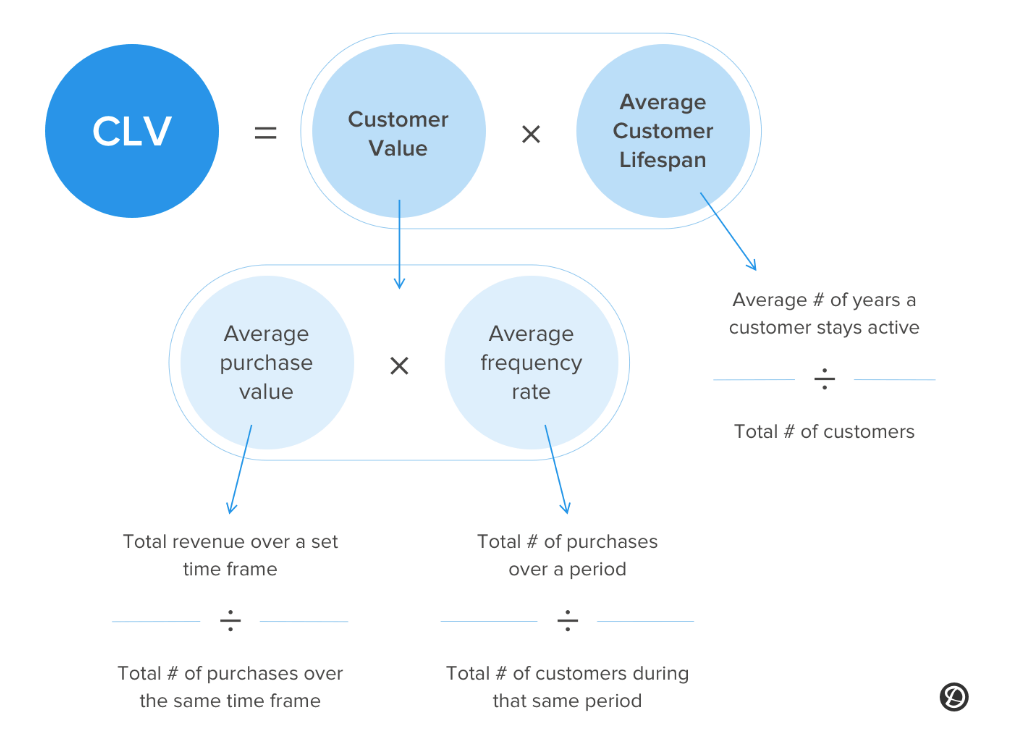 Source: Delighted
Source: Delighted
5. Churn Rate
The churn rate quantifies how often customers stop doing business with your company. Customer churn can occur when customers feel neglected or experience subpar customer service. CRM solutions help mitigate churn by sending personalized messages based on customer behavior and preferences. Examples of such personalized campaigns might include rewarding customers for reaching certain lifetime value milestones or soliciting their feedback to improve service offerings.
6. Customer Acquisition Cost (CAC)
Customer Acquisition Cost (CAC) is the sum of sales and marketing expenses needed to convert a lead into a customer. It is calculated by dividing the total cost spent on acquiring customers by the number of customers acquired. Implementing a robust CRM solution can help reduce CAC by focusing on qualified leads and automating marketing and sales functions. This strategy leads to closing more deals, thereby saving time and money for your business.
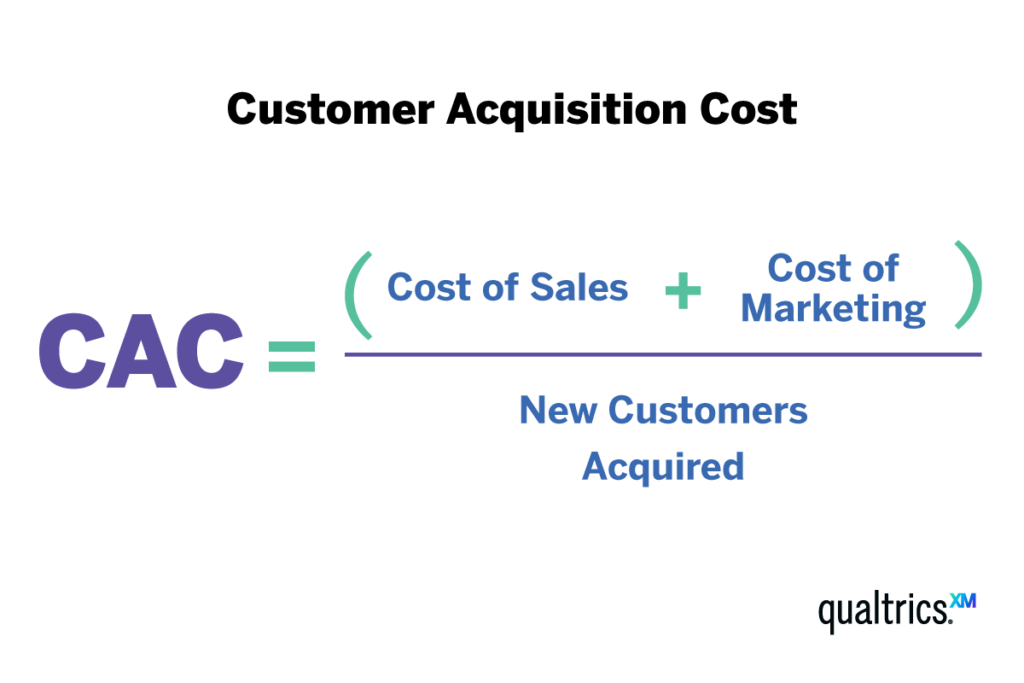 Source: Qualtrics
Source: Qualtrics
7. Campaign ROI
Campaign Return on Investment (ROI) measures the profitability of marketing campaigns launched using integrated data. Comparing the ROI over a certain period post-CRM implementation with the ROI prior to CRM adoption can provide insights into the success of your CRM integration. An increase in ROI after CRM implementation signals a successful integration. ROI is calculated by dividing the net profit by the campaign costs and multiplying by 100, giving you a percentage that represents the profitability of your campaign.
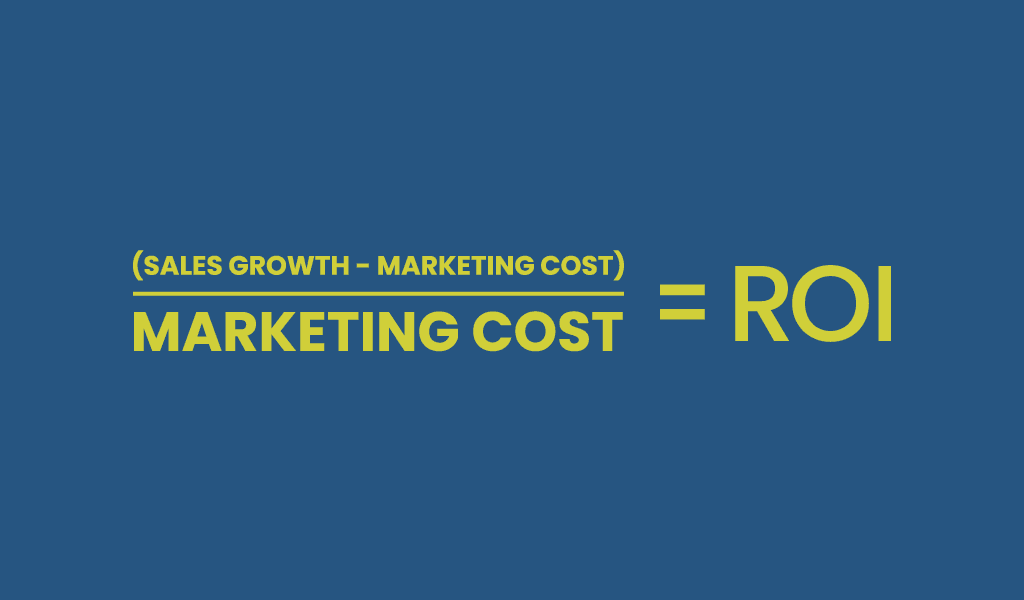 Source: Sayvee Creative
Source: Sayvee Creative
Wrapping Up
CRM integration is not just a mere technological implementation but a strategic choice that significantly impacts businesses across industries. It is the cornerstone of a data-driven approach that empowers organizations to deliver personalized and efficient experiences to their customers, thereby strengthening relationships and driving customer loyalty.
A successful CRM integration can serve as a catalyst for marketing, sales, and service operations. It helps in reducing customer acquisition costs, improving customer retention, and ultimately increasing the profitability of campaigns. Furthermore, it enables businesses to have a unified customer view across multiple touchpoints, leading to more personalized communication, improved collaboration, and the elimination of data silos.
In the face of increasing digitalization and customer expectations, businesses need to ensure that they are making the most of the technology at their disposal. With thorough planning, the right selection criteria, and a deep understanding of the benefits and challenges, CRM integration can be a game-changer. It paves the way for superior customer experience, operational efficiency, and improved bottom-line results.
But, the work doesn’t end once the integration is complete. It’s essential to consistently track key performance indicators to evaluate the success of the CRM integration. Continuous monitoring allows for prompt identification and resolution of issues, ensuring the system delivers optimal performance.
In conclusion, a successful CRM integration strategy empowers businesses to stay ahead of the curve, adapt to the changing market dynamics, and maintain a competitive edge. By leveraging data for personalized marketing, automating workflows, and keeping an eye on KPIs, businesses can unlock the full potential of CRM integration.


